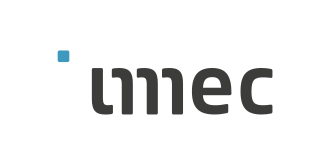
-
StatusOngoing
-
Status date2024-04-26
-
Activity Code5C.443
INFINIT has one main objective:
To gain a deep understanding of the N7 FinFET process technology for use in digital space applications.
In addition, two sub objectives are considered:
-
Create a minimum set of hardened standard cells
-
Establish a standardized radiation evaluation test vehicle approach for fast(er) evaluation of new advanced process technologies.
The starting TRL of the activity is TRL1: there are only a few publications on very specific radiation aspects, no structured technology evaluation exists.
The end TRL of the activity is TRL4: the radiation evaluation of the technology will be done by extensive validation of critical radiation aspects in a relevant environment and representative radiation models will be developed.
INFINIT is a pre-cursor project for the ESA UDSM programme. Further projects depend heavily on the outcome of INFINIT. Therefore, timely presentation of final results as well as having a baseline radiation-hard library is of utmost importance for further success of the N7 technology implementation in near-future space projects.
To evaluate how TID effects up to 100 krad(Si) introduces parameter drift of the N7 FinFET process technology, and how SEE irradiation affects the behavior of circuits. Based on the limited amount of public information about FinFET performance in irradiation environments, an initial set of radiation-hard cells is developed and prototyped to show which critical threshold and cross-section can be achieved.
A collection of independent test structures is used to evaluate radiation effects on N7 FinFET process technology. Complexity is minimized where possible to ensure any TID or SEE effects do not impact measurements.
A 5 mm2 ASIC consisting of two sub-dies: RETVD (digital test vehicle) and RETVA (analogue test vehicle), to be bonded mutually exclusively.
The Analog Test Vehicle contains transistor arrays and allows for highly accurate measurement of TID-induced effects.
The Digital Test Vehicle contains a mix of standard cells (foundry supplied) as well as a small set of RAD-hard custom cells to evaluate the effects of TID and mostly SEE on the N7 FinFET process technology.
Definition phase (WP1)
Technology exploration and test vehicle definition.
Milestones: KO, SRR, ADR
Design & manufacturing phase (WP2, 3, 4)
Design of test vehicle, test hardware, test software
Manufacturing and assembly of test vehicle, test hardware
Milestones: PDR, DDR, CDR
Test phase (WP5, 6)
Electrical and irradiation testing, and ASIC library design update
Milestones: TRR, DVR, FR
The technical preparation phase (WP1) has been successfully completed and the design partners are now preparing the preliminary design for an analogue and a digital radiation evaluation test vehicle. This includes the development of a set of test structures for TID and SEE irradiation, as well as a continuation of the initial technology definition work into the actual packaged samples.




